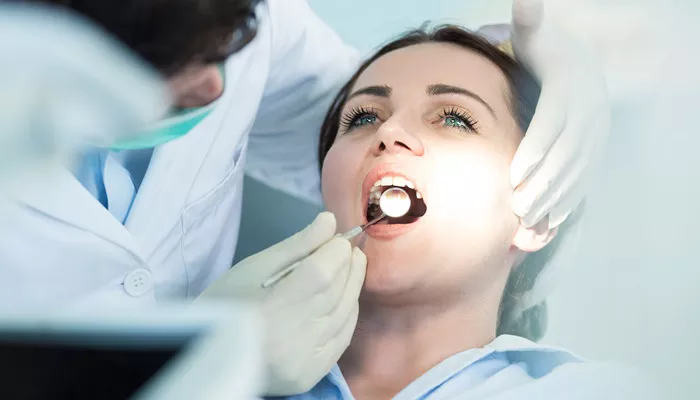Temporary Anchorage Devices (TADS) are innovative tools used in orthodontics to enhance tooth movement. They provide a stable anchor point, allowing orthodontists to achieve more predictable and efficient results. While TADS can significantly improve treatment outcomes, many patients wonder how long TADS orthodontic treatment takes. In this article, we will explore TADS in detail, including their purpose, benefits, placement, and the duration of treatment.
What Are TADS?
TADS, also known as temporary anchorage devices, are small titanium screws or mini-implants placed in the jawbone to provide anchorage during orthodontic treatment. They are designed to assist in moving teeth without relying on traditional methods, such as headgear or elastics. TADS allow for more precise control of tooth movement, making complex cases easier to manage.
Benefits of Using TADS
Enhanced Precision: TADS provide a stable anchorage point, allowing orthodontists to achieve more accurate and predictable tooth movements.
Reduced Treatment Time: By facilitating more efficient tooth movement, TADS can shorten the overall duration of orthodontic treatment.
Minimized Patient Compliance Issues: Unlike headgear, which requires patient compliance, TADS are fixed in place, eliminating the need for patients to remember to wear appliances.
Versatility: TADS can be used in conjunction with various orthodontic appliances, including braces and clear aligners, making them suitable for a wide range of cases.
Less Invasive: The placement of TADS is minimally invasive and can often be performed in the orthodontist’s office.
see also: How Often Should You Change Your Orthodontic Elastics?
How Are TADS Placed?
The placement of TADS is a straightforward procedure. Here’s what you can expect:
Consultation: Before placement, your orthodontist will evaluate your dental needs and determine if TADS are appropriate for your treatment plan.
Anesthesia: Local anesthesia is administered to numb the area where the TAD will be placed. This ensures that the procedure is comfortable.
Placement: The orthodontist uses a specialized instrument to insert the TAD into the jawbone. The procedure typically takes only a few minutes.
Recovery: After placement, patients may experience mild discomfort for a short period. Over-the-counter pain relievers can help manage any discomfort.
Where Are TADS Placed?
TADS can be placed in various locations in the mouth, depending on the specific treatment needs. Common sites include:
Between the Roots of Teeth: TADS can be placed between the roots of adjacent teeth to provide anchorage for tooth movement.
In the Palate: Some TADS are placed in the roof of the mouth, providing a stable anchor point for specific movements.
In the Jawbone: TADS can also be inserted directly into the jawbone, allowing for versatile anchorage options.
How Long Do TADS Stay in Place?
The duration for which TADS remain in place varies based on individual treatment plans and specific orthodontic needs.
Here are some key points regarding the timing of TADS:
Typical Duration: In most cases, TADS are used for a few months during orthodontic treatment. This duration allows for the necessary tooth movements to occur effectively.
Treatment Complexity: The length of time TADS are needed may depend on the complexity of the orthodontic issues being addressed.
More complex cases may require TADS to remain in place for a longer period.
Orthodontist’s Recommendation: Your orthodontist will determine the exact duration based on your treatment progress.
Regular check-ups will allow the orthodontist to monitor the effectiveness of the TADS and make adjustments as needed.
Removal: Once the desired tooth movements are achieved, TADS can be easily removed. This process is typically quick and does not require anesthesia.
Factors Influencing Treatment Duration
Several factors can influence how long TADS are used during orthodontic treatment:
Severity of Malocclusion: Patients with more severe orthodontic issues may require TADS for a longer duration to achieve optimal results.
Age of the Patient: Younger patients may experience faster tooth movement due to their developing bones, potentially shortening the duration of TADS use.
Patient Compliance: While TADS reduce the need for patient compliance, following the orthodontist’s instructions regarding care and follow-up appointments is still essential for effective treatment.
Type of Orthodontic Appliance: The type of braces or aligners used in conjunction with TADS can also impact treatment duration.
Caring for TADS
Proper care of TADS is essential to ensure their effectiveness and maintain oral health. Here are some tips for caring for TADS:
Oral Hygiene: Maintain good oral hygiene by brushing and flossing regularly. Use a soft-bristle toothbrush to clean around the TAD without causing irritation.
Avoid Hard Foods: Be cautious when eating hard or sticky foods, as they can dislodge the TAD or cause discomfort.
Use Antibacterial Mouthwash: Rinsing with an antibacterial mouthwash can help reduce the risk of infection around the TAD site.
Avoid Picking at the TAD: Do not touch or pick at the TAD, as this can cause it to become loose.
Monitor for Discomfort: If you experience persistent discomfort or if the TAD feels loose, contact your orthodontist for evaluation.
Conclusion
Temporary Anchorage Devices (TADS) are valuable tools in modern orthodontics, offering enhanced precision and efficiency in tooth movement. While the typical duration for TADS use is a few months, this can vary based on individual treatment needs and complexity. Proper care and regular follow-ups with your orthodontist are essential for ensuring successful treatment outcomes.

